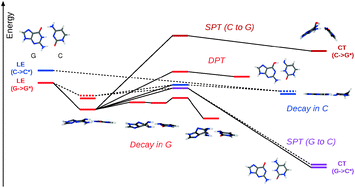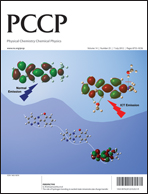Photoreaction channels of the guanine–cytosine base pair explored by long-range corrected TDDFT calculations†
Abstract
Photoinduced processes in the Watson–Crick guanine–

- This article is part of the themed collection: Hydrogen bonding in electronically excited states

 Please wait while we load your content...
Please wait while we load your content...